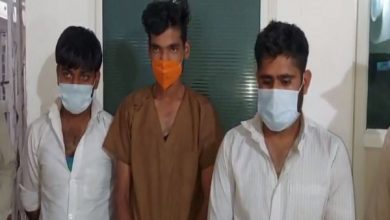Farmers Protest and Gujarat : Is it an ideal state for farmers?

Ahmedabad : While many farmers in North India are on the streets and agitating against the three new agricultural laws passed by the Modi government, there has been no major agitation in Gujarat except for a few demonstrations. Many farmers from Gujarat’s neighboring state of Rajasthan have also taken part in the protests in Delhi.
In the midst of this agitation, how happy the farmers of Gujarat are. And what is the problem of farmers in Gujarat? Experts believe that farmers in Gujarat do not have any problem at present when it comes to the current situation. According to him, the last problem of Gujarat farmers was electricity and crop insurance, which the state government has solved. Most of the farmers in Gujarat have sold their produce.
With the exception of a few cotton farmers, most of the farmers have sold their produce in the market, said farmer leader Sagar Rabari. Sagar Rabari said, “There is no current problem of Gujarat farmers which can be called a big issue.” “The problem of irrigation etc. will always remain, but at present there is no major problem that motivates the farmer to move out of his house and take part in any movement.”
He also said that most of the farmers in Gujarat can now sell their produce in one way or another. However, Sagar Rabari does not consider this situation permanent and fears that new problems may arise in the near future.
Decrease in farmland and increase in the number of farmers
According to the 2015-2016 figures of the Agriculture Census of India, 99,77,780 hectares of land in Gujarat is operational holding, i.e. farming and farming related works are done on it. However, the number of these lands was 1,02,69,264 hectares in the 2005-06 census, and 1,02,92,382 hectares in 1990-91. That is, farmland has declined over time.
According to the 2015-16 ‘Agriculture Census of India’, there are currently 53,20,626 operational holders in the state i.e. people involved in agriculture including farmers.
The number was 48,85,610 in the 2010-11 census, compared to 35,16,835 in the 1990-91 census. That means the number of people cultivating has increased, but farmland has decreased.
Farmers do not want the next generation to do farming
Rajendrasinh Zala, a farmer from Surendranagar, said he did not want to involve his son in farming if given the chance. He wants his son to do a private or government job.
Asked the reason behind his desire, he said, “Even after working hard in agriculture, the income is not visible. Despite working all year round, we cannot earn good money.”
Like him, many other farmers feel the same way.
Ramanik Vachhani, younger brother of Vrajlal Vachhani, a farmer from Malia taluka of Junagadh, committed suicide just last year.
He committed suicide as his debts increased due to losses in farming. The whole area mainly cultivates groundnuts. Gujarat is at the forefront of groundnut and cotton production in the country.
So does it directly benefit the farmers?
Talking about this, a farmer said, “We do farming because we have no other choice. We can’t do anything else, but I am ready to give up farming if given the chance.”
The unseasonal rains in November have damaged their crops. He said he would have got Rs 50,000 if his crop had reached the market, but before that the crop was spoiled. However, he received Rs 10,000 as government assistance.
Among the major crops of Gujarat, cotton, sugarcane and groundnut have been at the forefront for years. Although the number of farmers cultivating these crops has increased over time, the farmland has not increased.
Ajit Singh Jadeja, a native of Khambhlav village in Sarendranagar and cultivator of cotton, said that a farmer can afford a cotton crop for Rs 1500 per 20 kg and live a good life, but he has to sell it for around Rs 1,000.










